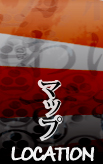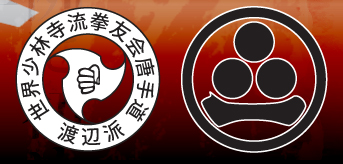 |
|||||||
 |
 |
 |
 |
 |
 |
 |
 |

Training Regimen Shorinjiryu Watanabe-Ha
Karate-Do training consists of the following: Tachi kata - stances. Tai sabaki - body movement. Mawari kata - turning form. Kokyu - breathing. Te waza - hand techniques. Ashi waza - foot techniques. Uke kata - blocking techniques. Kata are sequences of karate techniques developed as a method of training when alone, and as a vehicle for preserving and teaching the essence of a particular style of martial art. Shorinjiryu Watanabe-Ha Karate Do focuses on a relatively small number of kata developed or modified by Shinan Kori Hisataka and his son Shihan Masayuki Hisataka. Naihanchin no kata sho - Introductory kata which is an abbreviated version of Naihanchin no kata described below. Happiken no kata - Introduced to the student at the beginning levels, the name of this kata means 'to fight like a monkey in eight direction'. Nijushiho no kata - Okinawan kata which means 'twenty four movements', and stresses circular body movement and combinations of techniques. Naihanchin no kata dai - The complete form of Naihanchin kata. The name refers to 'sideways fighting' and stresses the idea of fighting in close quarters. Sanchin no kata - Ancient Okinawan kata modified by Shinan Hisataka which loosely means 'three foundations', and stresses the development of basic techniques such as breathing, stances, and technique. Sankakutobi no kata - Refers to a 'secret' technique in Okinawan karate, the sankakutobi (triangular leap), which is frequently encountered in Shorinjiryu Watanabe-Ha Karate-Do. Chinto no kata - Traditional Okinawan kata modified by Shinan Kori Hisataka which means fighting to the East, and was a favorite kata of Master Chotoku Kyan. Kusanku no kata - Advanced kata named after the Chinese dignitary who introduced it to Okinawa in the 18th Century; characterized by many kicks, including kicking combinations and jumping kicks. Kudaka Sai kata - Kata from the Kudaka (Hisataka) family emphasizing circular body movement and strong, swinging techniques using both sai against staff, spear, or sword attacks. Shishiryu Bo kata - Shishiryu (lion or king style) bo kata teaches circular body movement with strong striking and sweeping techniques. Tanshiki Kumite
describes the practice of single-attack, single-defense and counter-attack with
two opponents. Tori attacks with a pre-determined technique, and Uke defends
and counter-attacks using any combination of escape, block, hand, foot or
throwing technique. Shoden series - three introductory kumite for new students. Renshuu series - two practice kumite stressing kihon waza and tai sabaki. Itsutsu no waza - kumite based on the five elements: water, fire, earth, wind and air. Nijushiho no waza - applies techniques from Nijushiho no kata. Sankakutobi shodan - three kumite stressing sankakutobi movement. Sankakutobi nidan - three kumite stressing shortrange fighting and sankakutobi movement. Sankakutobi sandan - five brief defensive kumite practiced with empty hand, knife or sai. Randori series - three kumite stressing aggressive attacks and rapid escaping techniques. Naihanchin no waza - stresses sideways fighting techniques as in Naihanchin no kata. Naihanchin ni - three person kumite in which uke defends against two attackers. Shiai means contest, and
refers to the practice of free-fighting in Shorinjiryu Watanabe-Ha Karate-Do.
Shiai is practiced using full contact, and both opponents wear protective
armor, or bogu, to protect the target areas of the torso. Strikes must be made
to the bogu, and only strikes which are delivered with force and balance are
counted as successful. An ippon may be scored if the technique is judged
powerful enough to have disabled the opponent in a real-life situation. (In
this case the match may be ended immediately). The specific rules governing
each match may vary and are determined in advance by the head judge. |